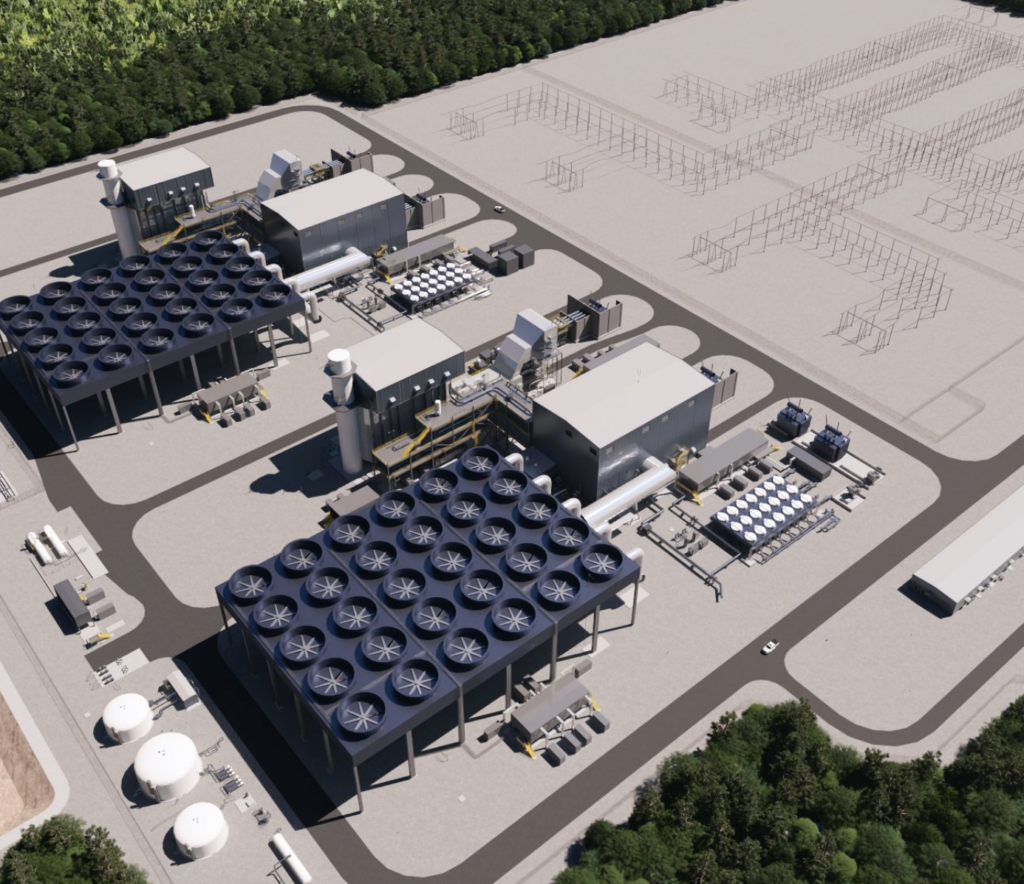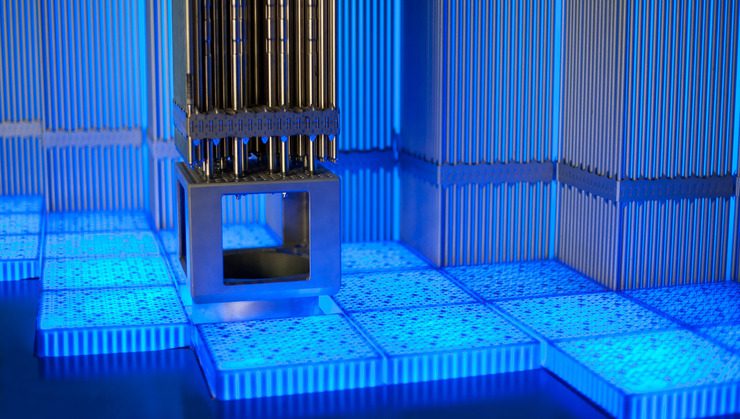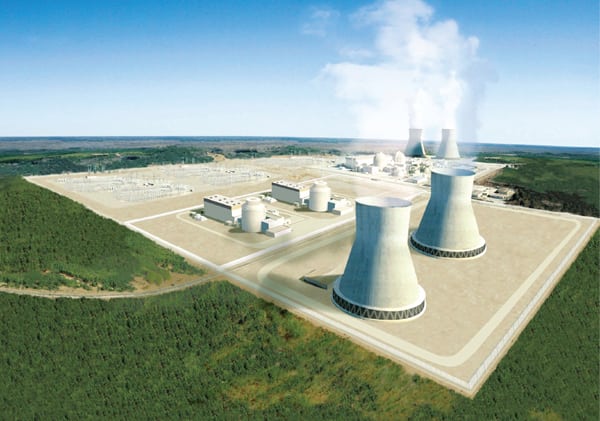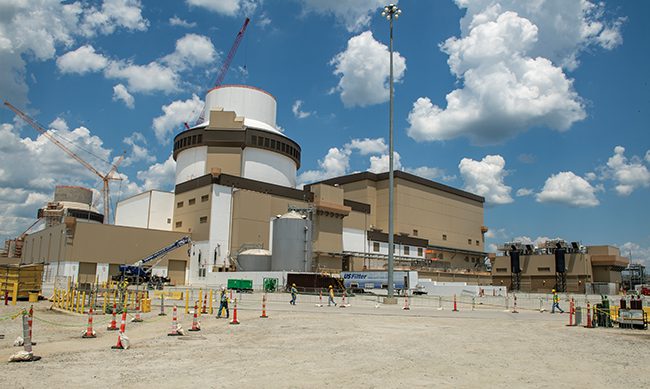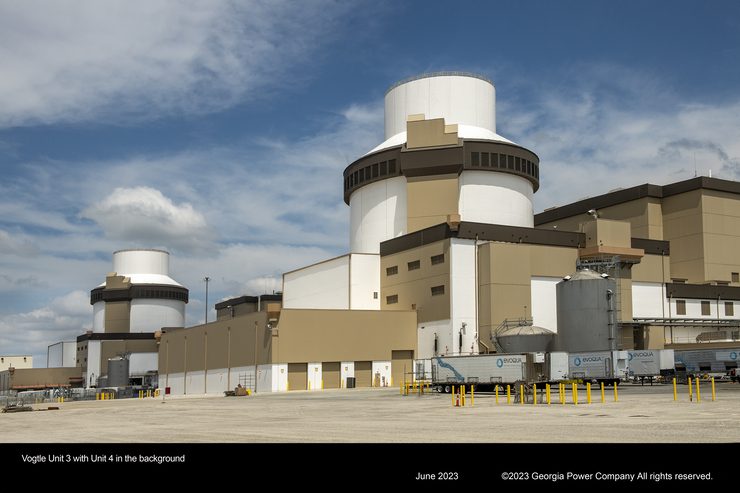In August 2009, the Nuclear Regulatory Commission (NRC) issued its fourth Early Site Permit for two new units at Southern Nuclear’s Vogtle site and its first for the Westinghouse AP1000 pressurized water reactor design. The two new units planned for Vogtle also became the reference plant for the AP1000 under NuStart in June 2009. This means Vogtle Units 3 and 4 will be the first licensed installations of the new AP1000 reactor design in the U.S. Plant Vogtle is expected to get the NRC’s approval to begin construction in 2011.
The Alvin W. Vogtle Electric Generation Plant (Plant Vogtle) is one of Georgia Power’s two nuclear facilities and one of three nuclear facilities in the Southern Company system (Figure 1). Southern Nuclear, a subsidiary of Southern Company since 1990, is the licensed operator of Plant Vogtle, which is located about 25 miles south of Augusta, Ga. The plant is jointly owned by Georgia Power (45.7%), Oglethorpe Power Corp. (30%), Municipal Electric Authority of Georgia (22.7%), and the Dalton Utilities (1.6%). Units 1 and 2 consist of Westinghouse four-loop pressurized water reactors (PWRs) rated at 1,109 and 1,127 MW respectively. Unit 1 began commercial operation in 1987; Unit 2 followed in 1989.
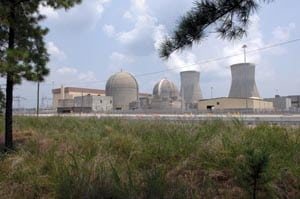
1. Peach of a plant. The Alvin W. Vogtle Electric Generation Plant is located on a 3,100-acre site along the Savannah River, 25 miles south of Augusta. Its two units entered commercial service in the late 1980s and together produce over 2,200 MW. Courtesy: NRC
David Jones, site vice president for Plant Vogtle’s planned Units 3 and 4, is responsible for construction and operation of the new units. Jones recently talked with POWER about the need for additional baseload capacity in the southeastern U.S. "Based on the statistical data from the Department of Energy, 40% of the U.S. population will be living in the southeastern U.S., and the state of Georgia alone is expected to grow by 4 million people, by 2030. Over the last 13 years, average residential consumption in Georgia rose approximately 16%. Over the next 15 years, electrical demand on the Georgia Power system is projected to grow 30%. The demand for electricity is going to be there, so we needed to develop a reliable baseload source of energy for our customers." The construction of Units 3 and 4 at Plant Vogtle is one way Southern Co. anticipates meeting the rising demand for electricity (Figure 2).

2. Twins. Southern Nuclear is moving forward with plans to build two new AP1000 Generation III+ nuclear reactors at Plant Vogtle. The two new plants are expected to enter commercial service in 2016 and 2017. This artist’s concept drawing illustrates the placement of the two new units in the foreground with the two existing units in the background. Courtesy: Southern Nuclear
Table 1. Timeline for Plant Vogtle Units 3 and 4. Source: Southern Nuclear
Jones added that each component of Southern Co.’s energy portfolio — nuclear, fossil, and renewables — is equally important. However, the long-range generation planning process identified nuclear power as the most cost-effective, reliable, and environmentally responsible energy source to meet growing electricity demands in its service territory. This requirement, plus the continued successful operation of Vogtle Units 1 and 2, were the primary reasons why nuclear power was chosen for the Vogtle expansion project. "From a company perspective, only 16% of our electricity is generated by nuclear power, and we wanted to maintain a proper mix of energy generating solutions. All of that culminated in choosing nuclear power," Jones added.
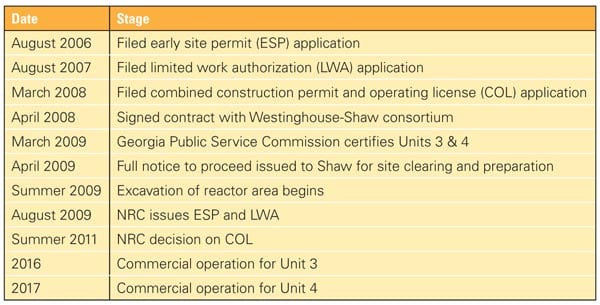
Table 1. Timeline for Plant Vogtle Units 3 and 4. Source: Southern Nuclear
Positive Steps Toward Building Two New Units
The NuStart Energy consortium was originally envisioned to demonstrate the licensing process for obtaining a combined construction and operating license (COL), but it has evolved into one of the critical success factors necessary to support the actual deployment of a new nuclear plant in the U.S. Jones said, "NuStart was very valuable from the standpoint of standardization. The advantage is that follow-on projects can in the future just reference those portions of the Plant Vogtle project COL application that contain standard licensing, engineering, technical, quality, and safety information, and develop their own applications much more efficiently. This alignment of resources creates a valuable experience base that can be used in the standardization of new plant construction and bring new technologies to market in a timely manner. This process allows the NRC [Nuclear Regulatory Commission] to focus their resources on the differences rather than go over documentation they have already approved.
"The goal going forward to a one-step licensing process and using a standard design, such as the AP1000, is very valuable to the success of our nuclear power plants," Jones continued. NuStart is participating in a cost-sharing program that is part of the Department of Energy’s Nuclear Power 2010 initiative. The permit time-savings for future projects could be enormous for adopters of the AP1000 PWR design in the future.
Southern Company’s schedule for the two new units at Plant Vogtle is reasonable and achievable (Table 1). The plan to proceed with building two new units at the Vogtle site was confirmed after achieving the following major milestones.
The NRC’s renewal of the operating licenses for Units 1 and 2 for an additional 20 years (completed June 2009). The renewal application was submitted on June 27, 2007. In June 2009, the NRC renewed the operating licenses for Units 1 and 2 for an additional 20 years. The new licenses for Units 1 and 2 will expire on Jan. 16, 2047, and Feb. 9, 2049, respectively.
The Georgia Public Service Commission’s (PSC’s) certification, required under Georgia law, that approved building two new reactors at the Vogtle site (completed March 2009). The PSC adopted a motion on March 17, 2009, allowing Georgia Power to recover the cost of financing the plant during construction. Both entities will jointly develop mechanisms to provide shared risk protection to taxpayers from significant cost overruns. In addition, the Georgia Senate voted to allow the company to recover its financing costs during construction of the reactors, thereby saving customers about $300 million over time. The PSC agreement set Georgia Power’s portion of the certified cost of each of the new units at nearly $6.5 billion.
The NRC’s issuance of an ESP and LWA (completed August 2009). Southern Nuclear had submitted an Early Site Permit (ESP) application for the Vogtle site to the NRC on August 15, 2006, and an application for a Limited Work Authorization (LWA) on August 16, 2007. (See the sidebar for a complete explanation of the NRC licensing process.) The ESP application requested the NRC to approve a project site adjacent to the existing Plant Vogtle Units 1 and 2. The ESP and LWA were approved by the NRC on August 26, 2009. The ESP is valid for 20 years. The LWA allows a "narrow set of construction activities at the site," according to the NRC. In Southern Nuclear’s LWA, the company can start construction activities limited to the placement of engineered backfill, retaining walls, lean concrete, mudmats, and a waterproof membrane (Figure 3).
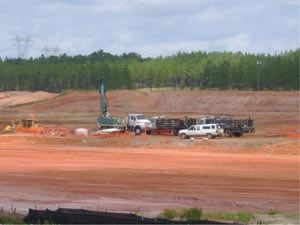
3. Early site works begins. Displacement in below-grade soil and rock is being monitored using an integrated system of highly accurate Geokon extensometers, displacement transducers, and pore pressure transducers. Other applications of this instrumentation include the measurement of ground movements around tunnels and behind retaining walls. Data obtained from the instrumentation at each monitoring location are collected several times each day and transmitted on-site by wireless radio from data loggers at each monitoring point, and then transmitted off-site via an IP phone to a central bank of data servers. Courtesy: J.M. Hylko
On August 26, 2009, the NRC issued an ESP for the two new units at the Vogtle site. Southern Nuclear’s ESP is the fourth such permit approved by the NRC but the first based on a specific technology: the Westinghouse AP1000 PWR (Figure 4).
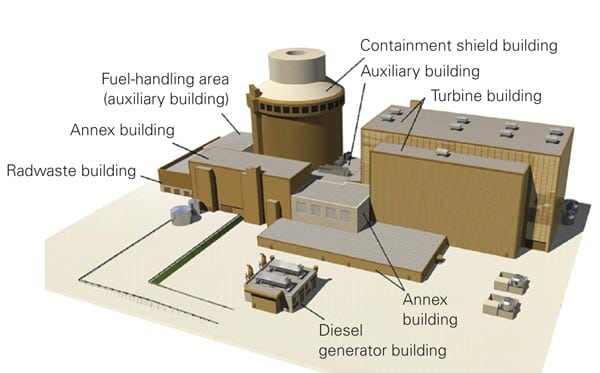
4. New PWR ready for business. The AP1000, based on the proven performance of Westinghouse-designed PWRs, is an advanced 1,154-MWe nuclear power plant that uses the forces of nature and simplicity of design to enhance plant safety and operations and reduce construction costs. Source: Westinghouse
Although the ESP, LWA, and COL processes can be combined, Southern Nuclear decided to treat each process separately. Jones explained: "We chose to do this in order to manage our construction and licensing schedules concurrently. Also, there are certain types of construction activities that can be performed prior to receiving NRC approval." For example, workers have been proceeding with excavation activities for Unit 3, which are expected to continue through February 2010. The excavation will consist of a hole about 90 feet deep, several hundred feet wide, covering about 42 total acres. More than four million cubic yards of soil will be removed from the excavation. Once the existing soil is removed, backfill and compaction activities must be approved and monitored by the NRC.
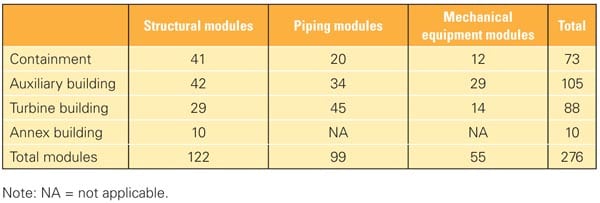
Table 2. Typical breakdown of AP1000 modules. Source: Westinghouse
The NRC Issues a COL (pending — scheduled for mid-2011). On March 31, 2008, Southern Nuclear filed an application with the NRC for a COL. The NRC has scheduled completion of the Vogtle final safety evaluation report in April 2011. Southern Nuclear expects to receive its COL later in 2011 and then immediately begin safety-related construction.
NuStart is working with Southern Company toward demonstrating the nation’s new process for licensing a nuclear power plant. For instance, Vogtle recently became the reference plant for the AP1000 under NuStart in June 2009. What this means is that Vogtle Units 3 and 4 will be the first to implement the NRC-approved AP1000 technology, and the Vogtle license application will serve as the reference COL.
"The licensing process and our timeline to have our new units operating by 2016 and 2017 were key contributors for selecting the AP1000," said Jones. He added that this timeline is reasonable because the NRC staff has provided Southern Nuclear with schedules or milestone dates as to when it expects to complete its reviews of a particular licensing submittal.
Commenting on the upcoming regulatory oversight, Jones noted, "We will have an NRC resident inspector on site once we begin the safety-related scope of work scheduled to begin first or second quarter of 2010. For now, the licensing organization within Southern Nuclear is corresponding primarily with the NRC headquarters staff in Washington. We have had a couple of meetings with the Region II staff in Atlanta, Ga., in order for them to adjust their resources, to make sure they can be on-site at the proper time to perform their necessary inspections, and be ready and support key construction milestone dates."
Southern Nuclear has signed an engineering, procurement, and construction (EPC) contract with the consortium of Shaw and Westinghouse for Units 3 and 4.
It’s worth noting that ESP, LWA, and COL processes are not unique to Vogtle Units 3 and 4; the NRC reports that 17 companies have submitted COL applications for up to 26 new nuclear reactors as of July 2009. Some of the earlier applicants in this process are also signing EPC contracts. As at the Vogtle site, other companies looking at new nuclear construction are conducting site preparation work such as land clearing, soil testing, and access road construction in anticipation of constructing new nuclear power plants.
The AP1000 Is NRC-Certified
Although no new nuclear plants have been ordered in the U.S. in 30 years, the major designers and manufacturers of these plants have continued to improve and refine designs, building several evolutions of successful designs in foreign countries. Westinghouse submitted the Standard Design Certification Application for its AP1000 reactor design on March 28, 2002. The NRC issued a final rule in the Federal Register certifying the Generation III+ design on January 27, 2006, and it remains the only Generation III+ reactor certified to date. Additionally, the European Utility Requirements organization certified that the AP1000 can be deployed in Europe. China is currently building multiple AP1000 reactors; its first unit is scheduled to be online by 2013.
The AP1000 has been designed to make use of modern, modular construction techniques (Figure 5). The design incorporates vendor-designed skids, equipment packages, and large multi-ton structural modules, as shown in Table 2. Welding and fabrication activities are performed in a factory environment, which improves working conditions and scheduling flexibility while reducing the special tools and equipment needed on-site. Furthermore, modularization allows construction tasks that were traditionally performed in sequence to be completed in parallel, thus reducing capital costs and shortening construction schedules to approximately 36 months from the pouring of first concrete to the loading of fuel.
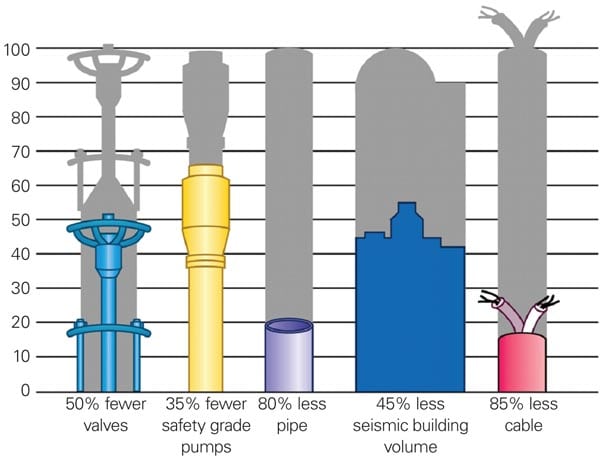
5. Inherently safe design. The inherent passive safety of the AP1000 derives from its modular construction design, which has fewer pumps and valves than the typical plant operating in the U.S. today. This increases reliability and reduces maintenance and operating costs. Source: Westinghouse
Principal Building Structures
The AP1000 plant is arranged with five principal structures — nuclear island, turbine building, annex building, diesel generator building, and radwaste building — each on its own base mat (Figure 6).

6. Reduced construction required. The AP1000 plant arrangement consists of five principal building structures: the nuclear island, the turbine building, the annex building, the diesel generator building, and the radwaste building. Source: Westinghouse
The nuclear island consists of a free-standing steel containment building, a concrete shield building, and an auxiliary building. These are the only Seismic Category I structures required with the AP1000 design. The foundation for the nuclear island is an integral base mat that supports these buildings.
The safety-related equipment designed to perform accident mitigation functions is located on the nuclear island. Therefore, the nuclear island structures are designed to withstand the effects of natural phenomena such as hurricanes, floods, tornados, tsunamis, and earthquakes, as well as the effects of postulated internal events such as fires and flooding, without loss of capability to perform safety functions.
To preclude adverse interactions, the plant arrangement provides for separation between safety-related and non-safety-related systems and equipment. This separation is provided by partitioning an area with concrete walls and provides confidence that the safety design functions can be performed. The remaining nonseismic structures do not contain any safety-related equipment.
Passive Safety-Related Systems
The AP1000’s passive safety systems include the passive core cooling system, containment isolation, passive containment cooling system, and the main control room emergency habitability system.
A major safety advantage of passive plants is that long-term accident mitigation is maintained without operator action or reliance on off-site or on-site AC power. Instead of relying on active components, the AP1000 relies on natural circulation to keep the core and containment from overheating. For example, in the event of a design-basis accident, such as a coolant pipe break, the plant is designed to achieve and maintain safe shutdown conditions. To provide high reliability, these systems are designed to move to their safeguard positions upon loss of power or upon receipt of a safeguards actuation signal — that is, a single move powered by multiple, reliable Class 1E DC batteries.
The passive safety system design does not require the large network of active safety-grade support systems (such as AC power, diesel generators, and HVAC) that are needed in a typical nuclear plant. Therefore, less Seismic Category I building volume is required to house the safety equipment, resulting in an approximately 45% smaller footprint compared to an existing nuclear power plant with the same generating capability. This provides a large capital cost savings, as seismic structures cost roughly three times as much as nonseismic structures.
The AP1000 uses extensively analyzed and tested passive systems to improve the defense-in-depth safety of the plant. The ACRS and the NRC have scrutinized these systems and ruled that they meet all the required criteria.
These defense-in-depth capabilities for accident mitigation result in extremely low core-damage probabilities while minimizing occurrences of containment flooding, pressurization, and heat-up. For example, the AP1000’s probabilistic risk assessment (PRA) core damage frequency (CDF) is 1/100 of the CDF of currently operating plants and 1/20 of the maximum CDF deemed acceptable for new, advanced reactor designs.
The AP1000 is designed to mitigate a postulated severe accident such as core melt. Additional features and improvements include the absence of bottom-mounted in-core instrumentation and a lack of vessel penetrations below the top of the core. Having the core lower in the reactor vessel minimizes core temperature excursions during loss-of-coolant accidents. The AP1000 operator can flood the reactor cavity space immediately, thereby surrounding the reactor vessel with water. The cooling is sufficient to prevent molten core debris in the lower head from melting the steel vessel wall and spilling into the containment.
Improved Operations and Maintenance Efficiencies
Operating U.S. nuclear plants are already competitive producers of electricity compared with coal-fired plants. They also have the advantage that fuel accounts for about 25% of production costs for nuclear power, while the remaining 75% is for fixed costs of operation and maintenance. Therefore, nuclear power production is much less sensitive to changes in fuel costs than fossil-fueled plants, where fuel can account for 75% or more of the production costs.
As an added benefit, the AP1000 reactor has several design features that improve plant production, enhance worker safety, and reduce costs:
-
The modular plant design and component standardization ensures a high degree of reliability, requiring significantly reduced maintenance, staging, and testing and inspection requirements.
-
An 18-month fuel cycle results in improved availability and reduced overall fuel costs.
-
Radiation exposure and the volume of generated plant radwaste are reduced.
-
A 60-year design life.
Competitors in the race to build the next generation of U.S. nuclear plants may be slow out of the blocks, but we expect the level of activity will accelerate in 2010 as companies that are serious about constructing Generation III+ reactors ramp up staff and on-site construction presence in preparation for a full construction release in 2011 – 2013. We expect Plant Vogtle to be the first of the next generation of nuclear plants to enter commercial service during 2016.
—James M. Hylko (jhylko1@msn.com) is a POWER contributing editor.


